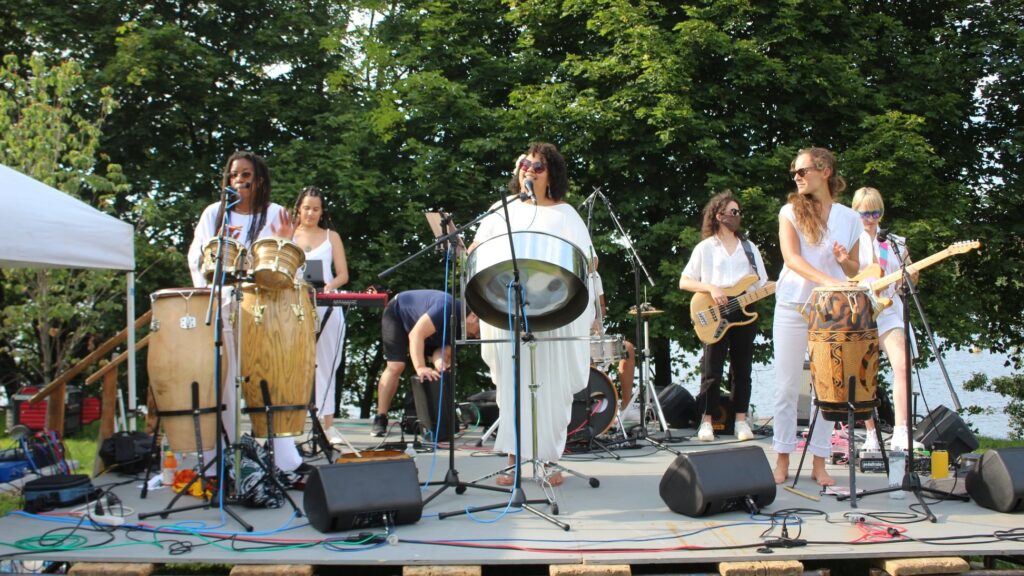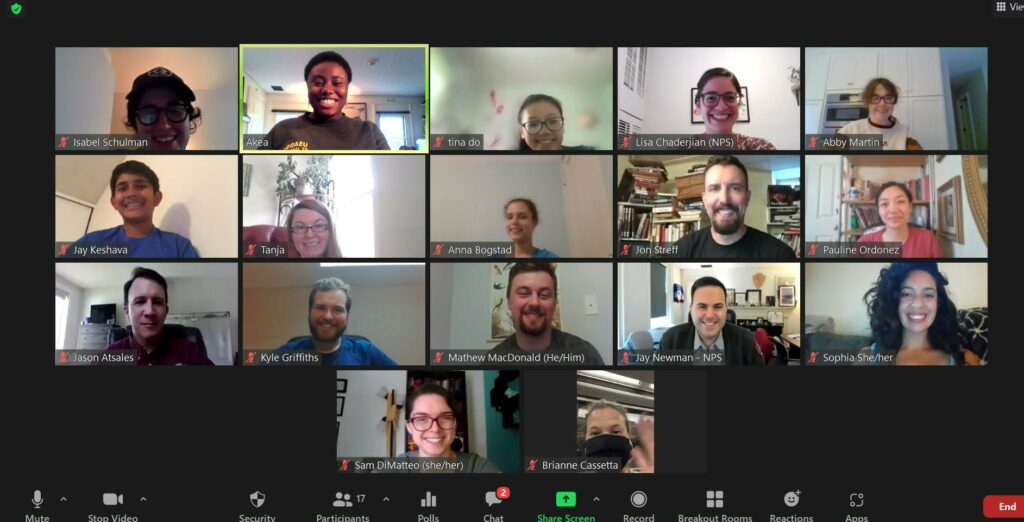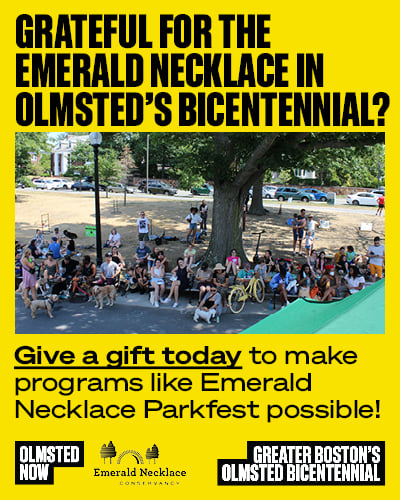This winter, artist and Mashpee Wampanoag resident of Boston Robert Peters will use a ceremonial circle for a medicine fire on Scarboro Hill in Franklin Park. Olmsted Now talked more with Robert about the event, supported by the Olmsted Now Parks Equity & Spatial Justice Grant. This interview has been edited for length and clarity.
How would you describe your program?
I actually applied for the grant with Erin Genia—she’s been an artist in residence for the city. The reason for our project is to put a ceremonial circle on top of Scarboro Hill for Indigenous cultural, spiritual and educational purposes. The idea is to bring the Indigenous community together. Boston’s Indigenous community is very fragmented for a lot of different reasons, and it’s almost like a Field of Dreams—you build it, and they will come. The local native people go back to their homes for their culture. Other native people are here, and they don’t really have connection to their culture here. And that shouldn’t be the case in a city as large as Boston. And then there’s also the concern of your local tribes. So, all of these things have to come together. And by no means is this a done deal—we have a lot of hurdles to go over to make this happen. We want it to be a permanent structure, so that presents even more hurdles for us to go over. I think that’s the idea and the genius of the [Olmsted Now Parks Equity and] Spatial Justice Grants—all of the people engaged in it would be challenged to push the envelope on the use of public space. I think public space for Indigenous reasons is a really good idea. Because originally, when we were just people, there was no concept of ownership. We didn’t own the land. We didn’t even own our bodies. You know, we were just here for the ride and left the earth pretty much as it was when we were born. So yeah, there’s a lot of moving parts that have to come together.
We intend to use the ceremonial circle for a medicine fire on Indigenous Peoples’ Day weekend*. People will be given the opportunity to come there, be smudged, offer tobacco to the fire, say the names of the people that we’ve lost in the pandemic, to drugs, to gun violence and be able to have that peace. We’ll open it up to everyone. This is a part of our culture that we can share. There are other parts of the culture that we’re more protective over, that we wouldn’t to want to involve the public in, but for the medicine fire, I think it offers a time of healing that everyone really needs right now.

How did you choose the location of your program?
Our project is going to be on Scarboro Hill in Franklin Park, and one of the reasons why I chose it to be there is because it’s very isolated from any neighborhood—it’s its own space—and for its beauty. It’s one of the places that Olmsted actually did landscaping and put the stones in that are there. My experience with Franklin Park came from, like, 1977, when I would come from Falmouth High School because I ran cross country—I actually won the freshman/sophomore meet—because all the track meets went out of Franklin Park. I have fond memories of that. It was a lot of work. It always seemed to rain. The finish line was approaching White Stadium; on that approach, if you were to dig it up, you would find about 1,000 sneakers, because people would lose their sneakers in the mud. I’ve actually lived in Boston now for 40 years, and as an adult, I would jog in the park. So, I know that park pretty well, and although there are other nice spots, there aren’t any spots that really have the privacy that that has. And that’s one of the reasons I chose it.
Why do parks need more equity and spatial justice programming?
There’s nothing more colonial than how our parks are currently used, and nothing more colonial than our official buildings and structures. To have parks that are useful, you really have to open up. Use our imagination to put parks to the best use, to a use that can benefit everyone.
What about parks and public spaces makes you most grateful?
Franklin Park is special to me because it’s where I get my exercise. The tennis courts at the bottom of Scarboro Hill are where I played tennis for most of my time. I was one of the original signers on the Franklin Park Tennis Association, and my group gives lessons—I don’t personally, but they give free lessons to people. And they’ve branched out, because they also give classes in Almont Park, which is also a beautiful park.
What 3-5 words capture the essence of your program?
Culture, family, growth and spirit.
(*NOTE: At the time of this interview, Robert Peters intended to hold his ceremony in October 2022.)




